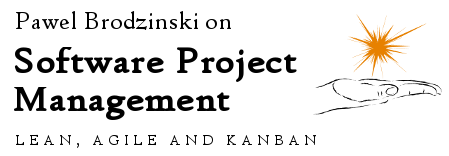One of the most valuable goals achieved by Eric Ries’ Lean Startup is popularizing the term Minimal Viable Product (MVP). Of course the concept isn’t novel. We were using the Minimal Marketable Feature (MMF) idea back in the early days of Kanban and it was coined based on the same way of thinking. There are more of such concepts too.
The basic premise is that we should build the smallest possible thing or run the smallest possible experiment that is still reasonable and adds value. Depending on the context the value may be something that helps users, but may as well be just knowledge discovery or verification a hypothesis.
One thing I’ve realized recently is how widely I apply this thinking. Initially, it was simply the way of breaking the scope down. I wanted my teams to build possibly small, but still valuable, chunks of software so a client can verify them and feed us back with useful information. Then, after Lean Startup, it was about running a product. What we want to build something new that kicks butts. What is the smallest feature that can prove or disprove the hypothesis that it would work at all?
Somehow I now use the same way of thinking, MVP thinking if you will, to discuss marketing ideas, define actionable items during retrospectives, etc. Often it is difficult to define a product per se, but there always is some kind of an expected outcome and definable minimal effort allowing the get that outcome.
So how would I define MVP thinking?
1. Define the next smallest valuable goal you want to achieve.
2. Define minimal effort that allows you to achieve that goal.
3. Execute.
4. Analyze the outcomes and learn.
5. Repeat.
A potentially tricky part here is defining the goal because it is totally contextual. It is also something that really appeals to me as I don’t like recipes. In fact, if there is anything new here it is basically extremely broad application of the pattern as the idea itself is anything but new. I mean, we usually close our context to working with the scope of a project, driving a product, running a business, etc. Then, we absolutely coin a new term and if it works we make our careers as overpriced consultants.
That’s totally not my goal. I’m just trying to broaden an applicable context of ideas we already know as I’ve personally found it helpful.
So if my problem is a roof leaking near a roof window my next minimal goal may be verifying whether the leakage has anything to do with an external window blind. Such a goal is nice because minimal effort may mean simply waiting for the next rain with the blind either opened or closed. I definitely don’t rush to repair the roof.
Talking about marketing? Let’s set a general goal that, say, TechCrunch will cover us. What would be the smallest valuable experiment that can bring us closer to achieving this kind of a goal? I guess reaching out and networking may be a very reasonable first step. It doesn’t even require having an idea, let alone a product, that we want to have covered.
How about a product? Well, this one was covered virtually everywhere. Building minimal functionality, possibly even fake, that allows verifying that the idea for the product makes sense.
Retrospectives? What is a single, smallest possible, change that will have a positive impact on the team? Try it. Verify it. Repeat.
Heck, I even buy my sailing gear this way. What is the smallest possible set that allows reasonable survival? Then I use the outcome and iterate, e.g. next time I need new gloves, long johns and waterproof case for a phone.
When you think about that it is basically Kaizen – systematically running small improvement experiments everywhere. So yes, it’s nothing new. It’s just the specific idea of Minimal Viable Product that spoke to me personally and gave me a nice constraint that can be used in different areas of my life.
By the way, despite it very open definition I also find Kaizen usually applied in a very limited context. So no matter which idea works for you, just remember you can use it in broader context.


 Subscribe RSS feed
Subscribe RSS feed Follow on Twitter
Follow on Twitter Subscribe by email
Subscribe by email



0 comments… add one